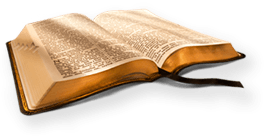King James Bible
King James Version (KJV)


The temple erected by the exiles on their return from Babylon "had stood for about five hundred years, when Herod the Great" became king of Judea. The building had suffered considerably from natural decay as well as from the assaults of hostile "armies, and Herod, desirous of gaining the favour of the Jews," "proposed to rebuild it. This offer was accepted, and the work" "was begun (B.C. 18), and carried out at great labour and" "expense, and on a scale of surpassing splendour. The main part" "of the building was completed in ten years, but the erection of" the outer courts and the embellishment of the whole were carried on during the entire period of our Lord's life on earth (John "2:16, 19-21), and the temple was completed only A.D. 65. But it" was not long permitted to exist. Within forty years after our "Lord's crucifixion, his prediction of its overthrow was" accomplished (Luke 19: 41-44). The Roman legions took the city "of Jerusalem by storm, and notwithstanding the strenuous efforts" "Titus made to preserve the temple, his soldiers set fire to it" "in several places, and it was utterly destroyed (A.D. 70), and" was never rebuilt. "Several remains of Herod's stately temple have by recent "explorations been brought to light. It had two courts, one" "intended for the Israelites only, and the other, a large outer" "court, called "the court of the Gentiles," intended for the use" of strangers of all nations. These two courts were separated by "a low wall, as Josephus states, some 4 1/2 feet high, with" "thirteen openings. Along the top of this dividing wall, at" "regular intervals, were placed pillars bearing in Greek an" "inscription to the effect that no stranger was, on the pain of" "death, to pass from the court of the Gentiles into that of the" Jews. At the entrance to a graveyard at the north-western angle "of the Haram wall, a stone was discovered by M. Ganneau in 1871," "built into the wall, bearing the following inscription in Greek" "capitals: "No stranger is to enter within the partition wall and" enclosure around the sanctuary. Whoever is caught will be "responsible to himself for his death, which will ensue." "There can be no doubt that the stone thus discovered was one of those originally placed on the boundary wall which separated the "Jews from the Gentiles, of which Josephus speaks." "It is of importance to notice that the word rendered "sanctuary" in the inscription was used in a specific sense of the inner "court, the court of the Israelites, and is the word rendered" "temple in John 2:15 and Acts 21:28, 29. When Paul speaks of" "the middle wall of partition (Eph. 2:14), he probably makes" allusion to this dividing wall. Within this partition wall stood "the temple proper, consisting of, (1) the court of the women, 8" feet higher than the outer court; (2) 10 feet higher than this "court was the court of Israel; (3) the court of the priests," "again 3 feet higher; and lastly (4) the temple floor, 8 feet" above that; thus in all 29 feet above the level of the outer court. "The summit of Mount Moriah, on which the temple stood, is now "occupied by the Haram esh-Sherif, i.e., "the sacred enclosure." "This enclosure is about 1,500 feet from north to south, with a" "breadth of about 1,000 feet, covering in all a space of about 35" "acres. About the centre of the enclosure is a raised platform," "16 feet above the surrounding space, and paved with large stone" "slabs, on which stands the Mohammedan mosque called Kubbet" "es-Sahkra i.e., the "Dome of the Rock," or the Mosque of Omar." This mosque covers the site of Solomon's temple. In the centre "of the dome there is a bare, projecting rock, the highest part" "of Moriah (q.v.), measuring 60 feet by 40, standing 6 feet above" "the floor of the mosque, called the sahkra, i.e., "rock." Over" this rock the altar of burnt-offerings stood. It was the threshing-floor of Araunah the Jebusite. The exact position on "this "sacred enclosure" which the temple occupied has not been" yet definitely ascertained. Some affirm that Herod's temple "covered the site of Solomon's temple and palace, and in addition" enclosed a square of 300 feet at the south-western angle. The temple courts thus are supposed to have occupied the southern "portion of the "enclosure," forming in all a square of more than" 900 feet. It is argued by others that Herod's temple occupied a "square of 600 feet at the south-west of the "enclosure."
Related Bible Dictionary Terms:
Temple Temple Solomons Temple the Second